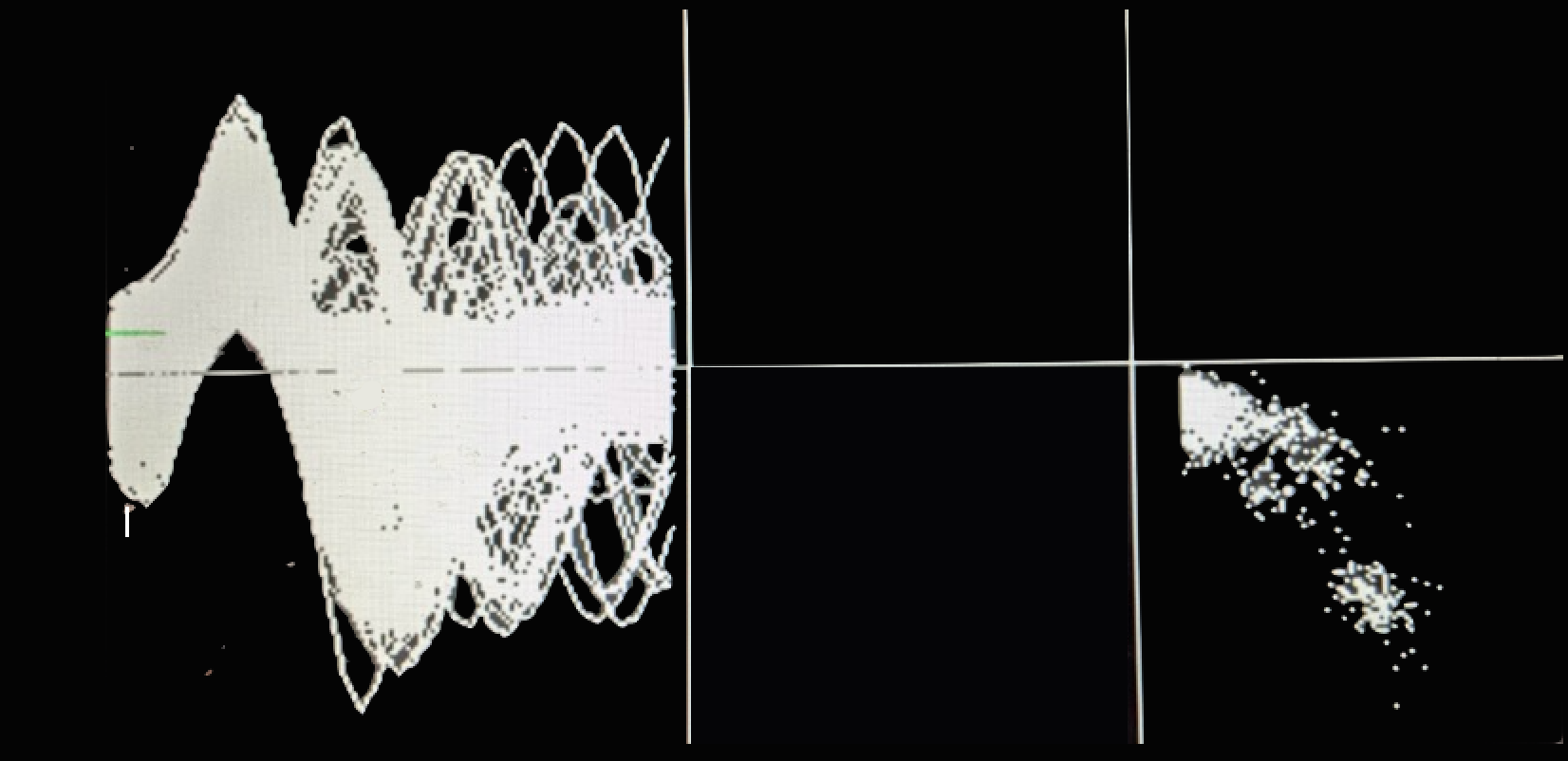
Research
Ripples and Emotional Memory
The link between memory and emotion is hypothesized to depend on amygdala-hippocampal interaction during consolidation but is not yet fully understood. Using human intracranial recordings (Zhang et. al) suggests that enhanced memory for emotional events is associated with increased post-encoding neural activity (ripples) in the amygdala and hippocampus. Furthermore, the combined influence of these regions predicts the accuracy of memory discrimination. Our lab continues to explore how these awake state ripples relate to emotional memory consolidation.
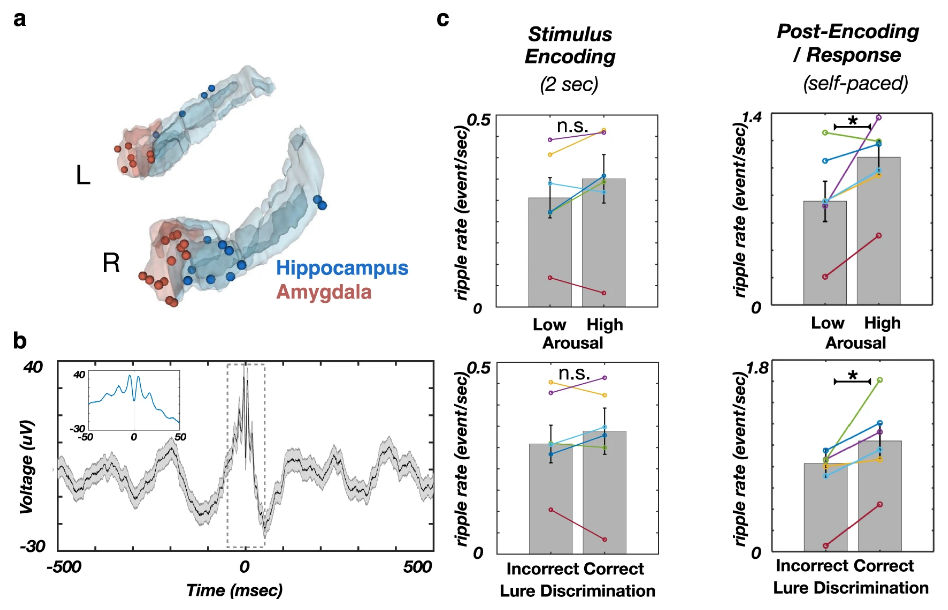
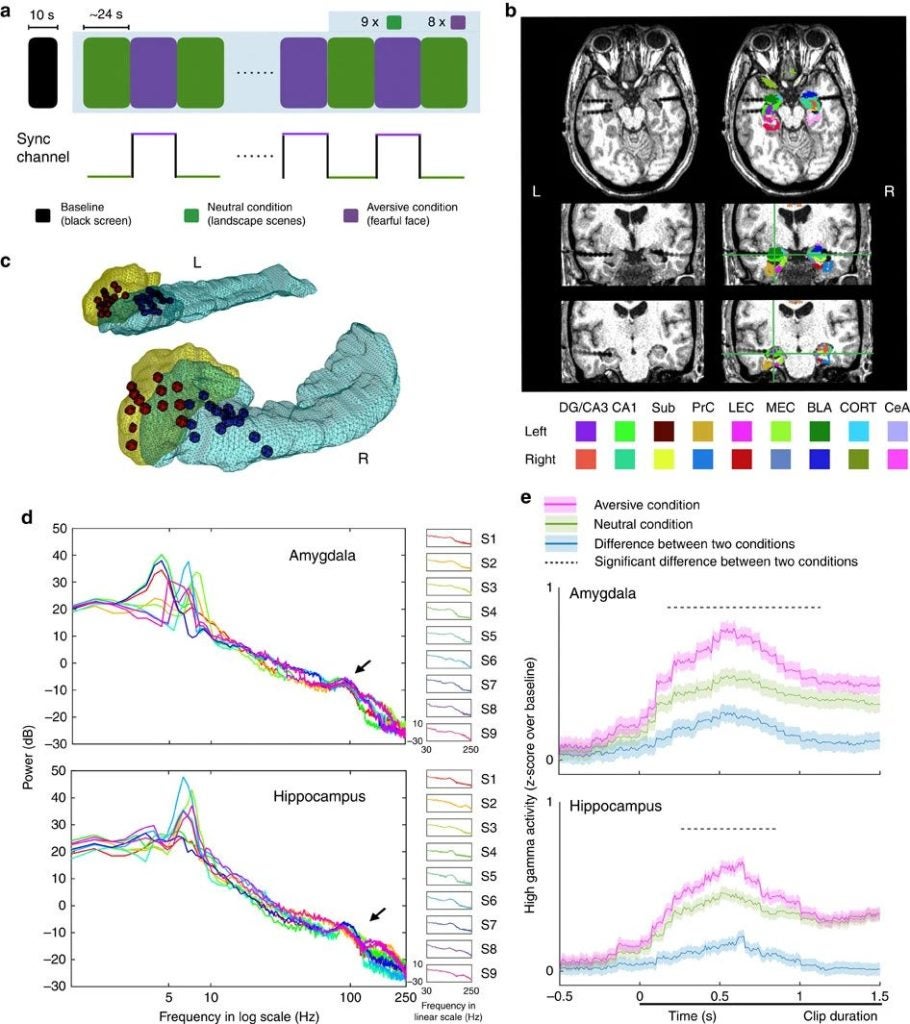
Emotion and Memory
Recognizing and understanding emotional and social stimuli is crucial in guiding human behavior. While the amygdala and hippocampus are thought to be key brain structures in processing, storing, and forming emotional memories and judgment, the amygdala-hippocampal connectivity in humans is yet to be studied. We have shown that coupling between the two brain regions is predominantly unidirectional, with amygdalar low-frequency oscillations exerting influence on the hippocampal high gamma activity (Zheng et. al). Our lab continues to focus on how the amygdala and hippocampus interact to engage in the various stages of salient emotional processing.
Sleep and Memory
Memory consolidation, the act of transforming newly encoded information into long-term memory, generally happens in the hippocampus during sleep. It is hypothesized that neuronal synchronization across various subcortical and cortical neuronal populations could be associated with this. While there are a multitude of theories as to which neuronal ensembles interact for memory consolidation during sleep, the underlying mechanisms of the hippocampal-dependent memory consolidation network are still unclear. We have found that coupling between hippocampal sharp-wave ripples and local slow wave activity could predict widespread modulation of high-frequency activity. This suggests that the coupling of distant cortical populations may be a potential mechanism in sleep-based memory consolidation (Skelin et. al). Our lab continues to investigate the coordination of neuronal activity to form long-term memories during sleep..
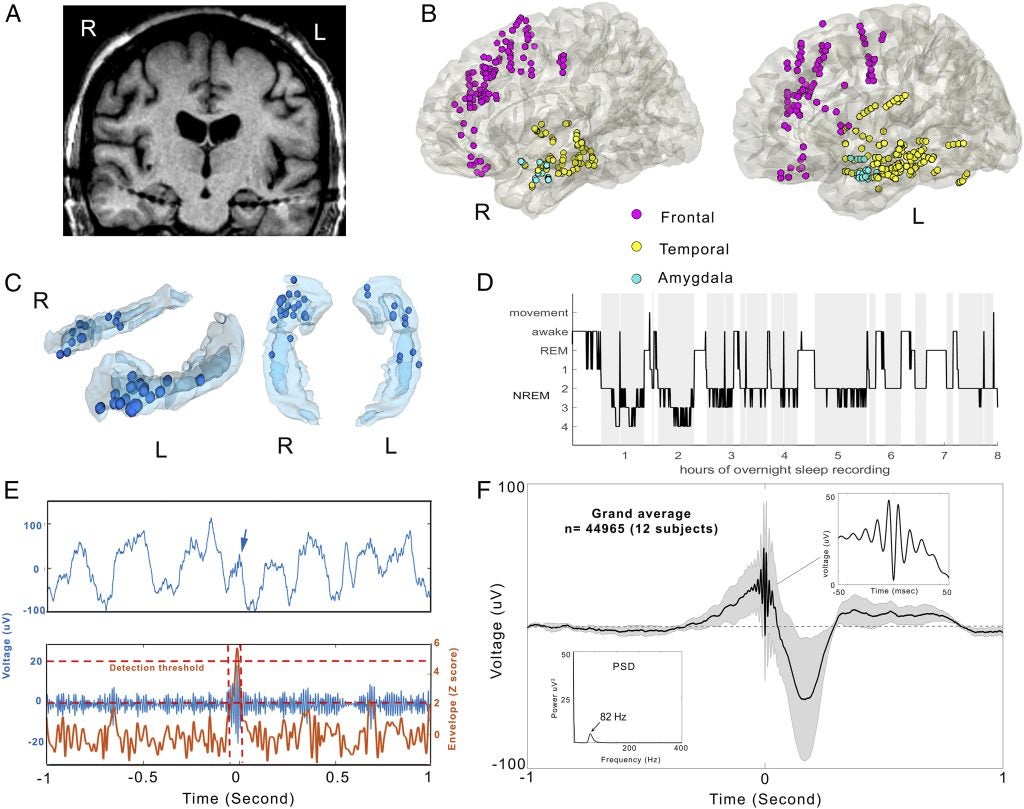
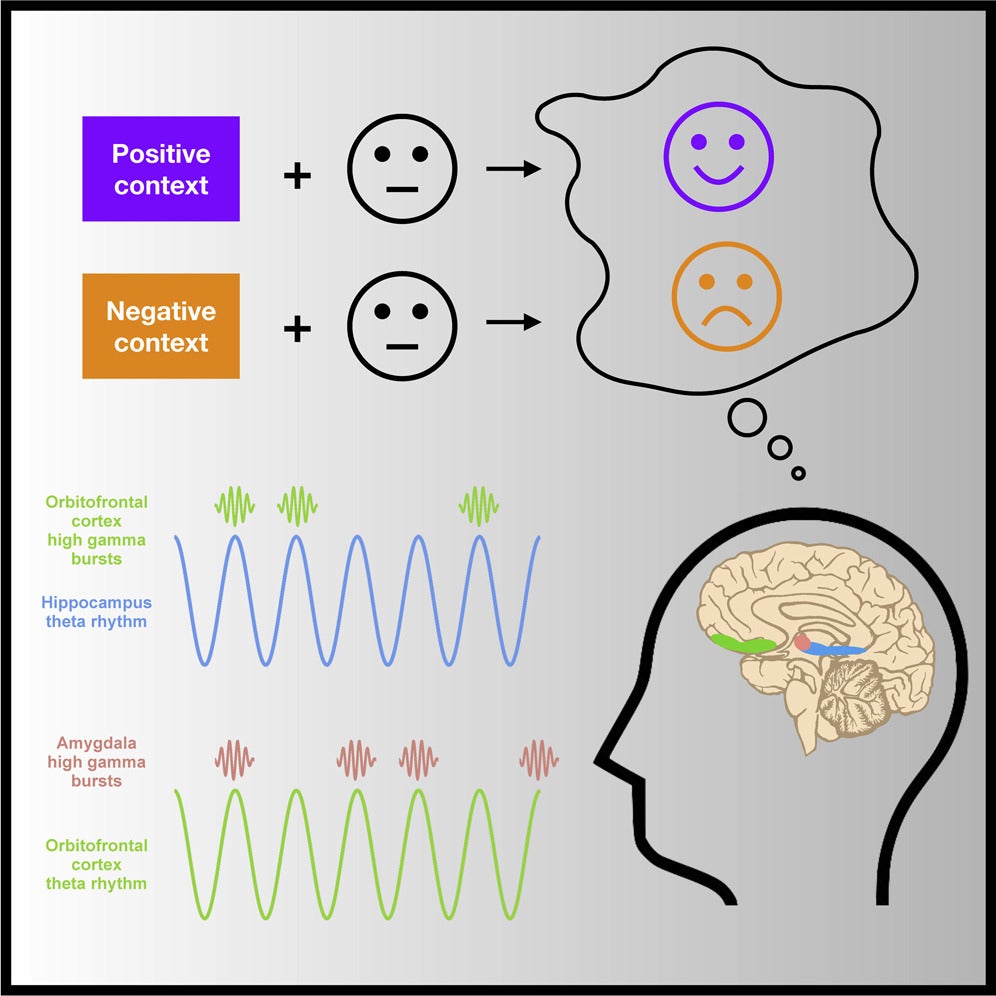
Contextual Decision-Making
Human interaction and decision-making are shaped by the context of various daily events. Context allows for humans to gain event-specific information to form decisions on our social behavior and interpersonal relationships and prevents ambiguity in decision-making. The amygdala-hippocampal network is believed to be a key brain region in contextual decision-making. As crucial as contextual processing is in daily human behaviors and interactions, the underlying process by which our brains encode contextual information and modulate our behavior is still unsettled. We have identified that theta-gamma interactions in the amygdala-hippocampal network and theta phase shift in the subsequent representation of the contextual information in the orbitofrontal cortex is crucial in mediating associations between facial expression processing and context, which supports flexible social human interaction (Zheng et. Al). Our lab continues to explore the circuit interactions between the amygdala, hippocampus, and orbitofrontal cortex in processing contextual information to form decisions.